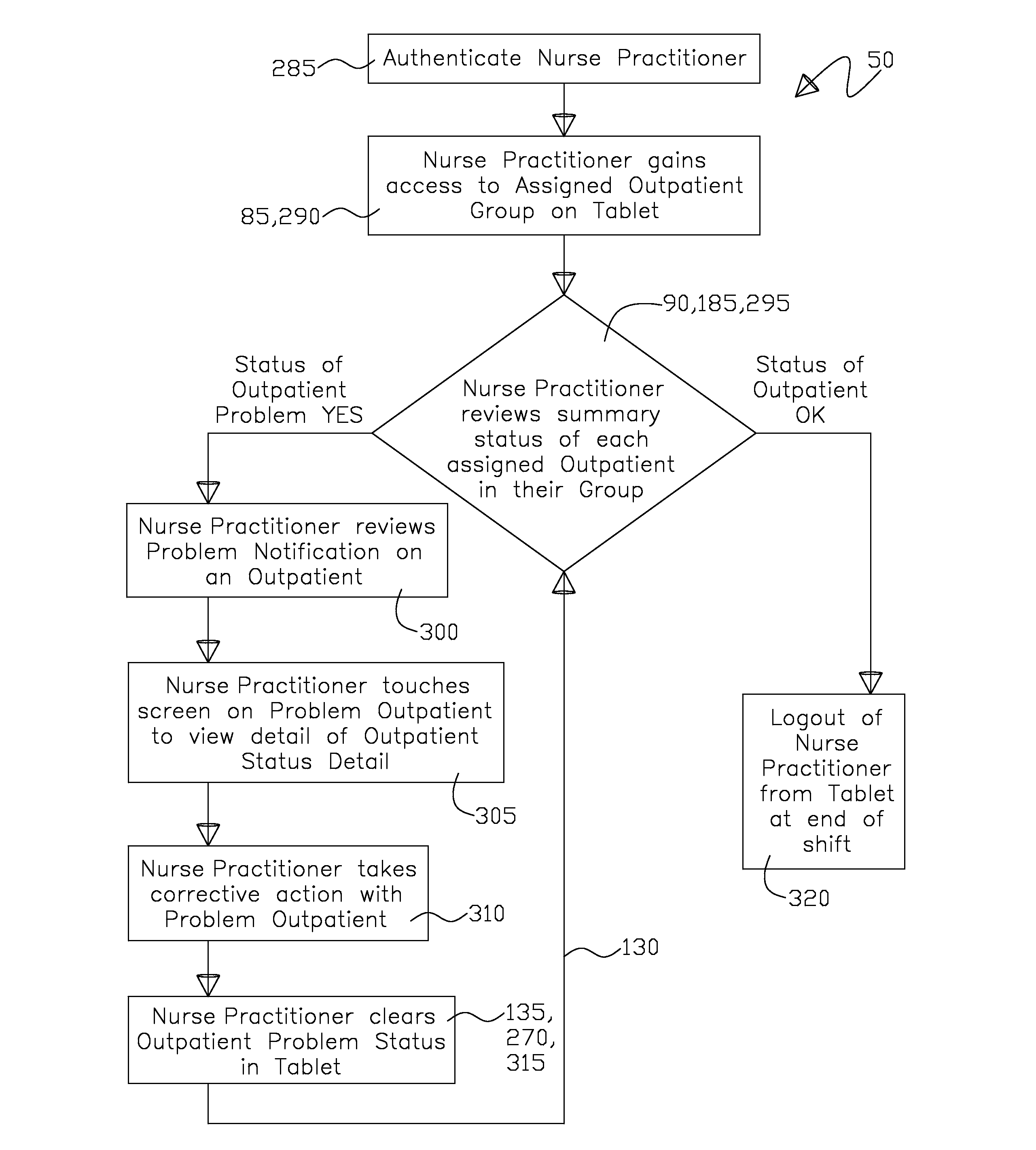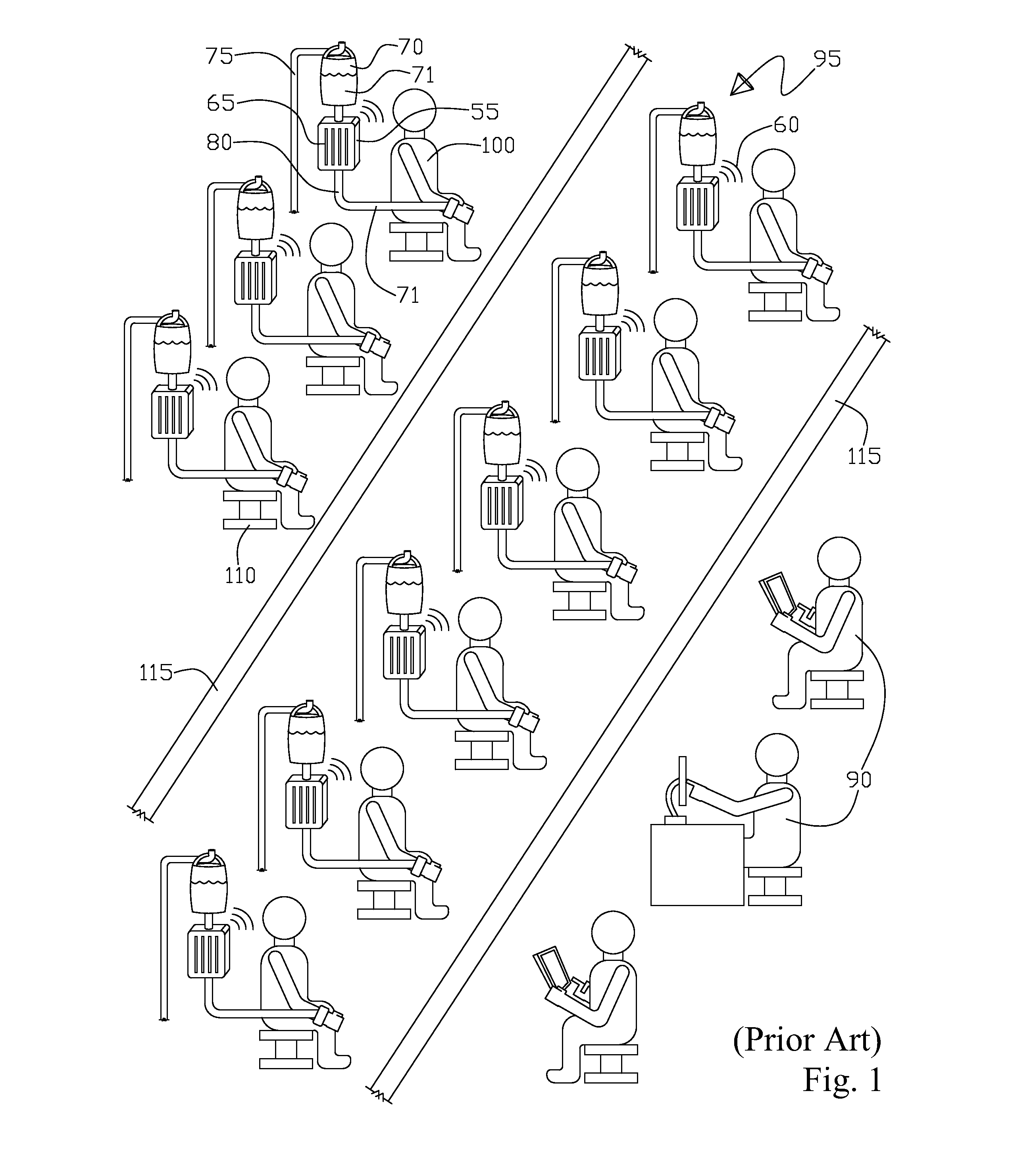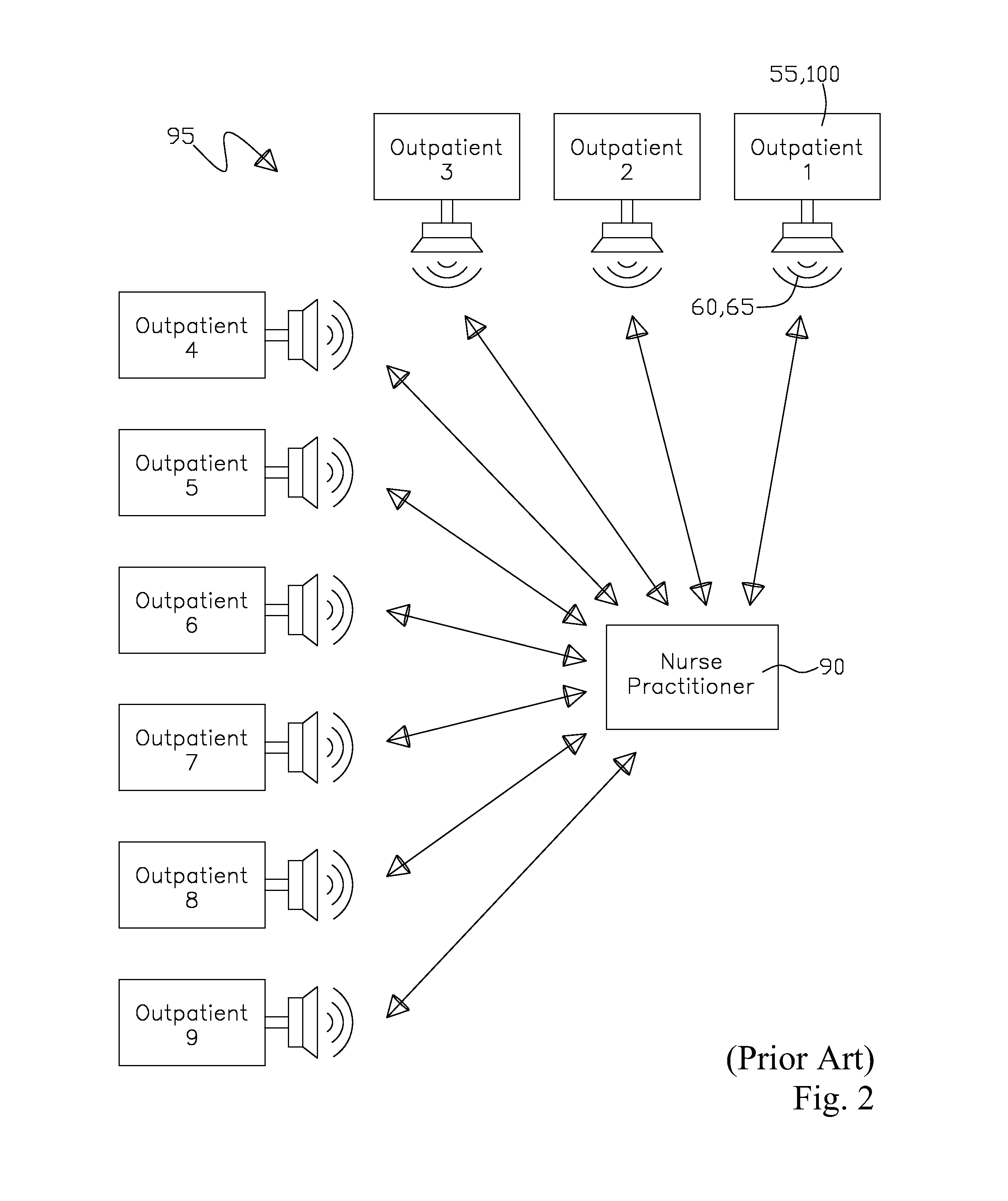The problem with numerous alarms, this being compounded by up to fifty IV pump units in a
single room alarming almost continuously thus causing significant
noise pollution for both patients and staff, further these continuously sounding alarms cause unease and agitation in patients who are inherently already uncomfortable being tied down via the infusion process plus, in addition the patients are typically not feeling well and just want to relax or sleep, of which the almost continuous IV pump alarming prevents-especially the audio alarms.
Another problem is that the IV pump alarms are very vague, when a particular IV pump alarm activates that is associated with a particular patient, it is difficult to tell which patient's IV pump alarm is activated, especially with adjacent patient's IV pump alarms activating simultaneously with the nurse literally having to run around the entire infusion center room trying to determine the particular IV pump that is alarming that is associated with a particular patient.
This
scenario is a significant source of interruption to the nurse's
workflow that interferes with charting-
record keeping or spending time with patients, which in turn results in decreased productivity and
increased risk for error on the part of the nurse.
There are typically two problems with the IV pump audible alarms in particular, firstly they are loud and disruptive, oftentimes many IV pumps will alarm simultaneously, creating significant
noise pollution for both patients and
nursing staff.
The noisy environment means that some audible alarms go unheard because the
nursing staff literally cannot hear them or discern them on an individual basis.
This is particularly troublesome when the patient is in a room distant from the nurse's
station, or the patient has the room door closed or they are in the bathroom.
That's the multiplicity of audio alarms again adds unnecessary stress and
sleep deprivation which is detrimental to the patient healing process.
The second problem is with the audio alarms is that they are vague and nondescript.
It is difficult for the nurses to discern which patient's
infusion pump alarm is actually going off, especially when several
infusion pump audio alarms are alarming simultaneously.
Further this environment creates a significant source of interruption to the nurse's
workflow, disrupts time spent with other patients, interferes with charting and
documentation, and ultimately results in decreased productivity and an
increased risk for error in not immediately tending to a particular patient's audible IV alarm.
In the typical fast-paced, often hectic healthcare environment,
patient care has become more complex, with higher
nursing accuracy required combined with a higher volume of patients to tend to.
This results in the IV Pump alarm working successfully as a standalone device in its own room wherein the IV Pump alarm is easily discernible for the timely proper attention from the nurse practitioner as opposed to a large room containing a large number of IV Pumps close to one another that are alarming simultaneously wherein it is difficult for the nurse practitioner to distinguish as between the multiple IV Pump simultaneous alarms, thus making the timely corrective action performed upon a specific IV Pump more difficult for the nurse practitioner.
The focus of Hastings is to provide
wireless signal backup by utilizing two signals to the portable device that gives a perceptible output to the medical caregiver of a particular patient's physiological attributes that can include text and / or data (i.e.
ECG waveforms), thus this describes the receiving part of the Hastings
system, however, there is no teaching as to
signal generation at the monitoring device.
Gaines uses a combination of internet and
wireless data transfer; however, there is no teaching as to specifics of the
signal generation or to the perceptible output (portable) of the
signal reception.
There is mention in Smith of a sensor
transmitter in U.S. Pat. No. 6,731,962, being a finger oximeter with remote telecommunication capability (single output and reception) wherein Smith adds
tethering for a daisy chaining of the single signal to a number of perceptible output devices; however, there is no sophisticated
software to control multiple data inputs for multiple patients.
However, Dempsey has no detailed teaching relating to the generation of the transmitted signal from patient monitoring.
This is as opposed to the prior art
system having a multitude of local (
proximate to each outpatient) audio and visual alarms on the IV Pump-that requires the nurse practitioner to “hunt down” which outpatient's equipment is alarming, as typically each of the outpatient's are in close proximity to one another making it difficult for the nurse practitioner to quickly ascertain which particular outpatient needs their abnormal treatment session data corrected, in addition to each outpatient having to hear and see numerous audio and visual alarms of themselves and others that can lead to outpatient aggravation and unease.
 Login to View More
Login to View More  Login to View More
Login to View More 


